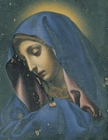Japanese Gallery (Honkan) Room T2
October 7, 2008 (Tue) - November 16, 2008 (Sun)
From the end of the 15th century to the beginning of the 16th, Portugal and Spain, competing against each other in their search for new territory, sailed out into the unknown.
Portuguese ships sailed eastwards around the globe via the African Cape of Good Hope and reached Malacca on the Malay Peninsula in the early 16th century. The Jesuit missionary priest Francesco Saverio (1506-1552, or St. Francis Xavier) first stood on Japanese soil on the shores of Kagoshima in 1549. On the other hand, the Spanish sailed westwards discovering the Americas and reaching the Philippines in the early 16th century.
Francesco Saverio (known to the Japanese as Shabieru) was the first missionary who began to evangelize Japan. He administered baptism to several feudal lords of Kyushu and the Kansai area, and the number of Christians amongst the population increased steadily. According to the record of the Jesuits, missionary priests sent orders for mass utensils necessary for their work back to their home country.
Alessandro Valignano (1539-1605), then Apostolic Visitor of the East India Jesuit mission, arrived in Japan in 1579. Under his command, educational institutions like seminaries and colleges were established to construct a framework for missionary work in Japan. It is believed that Western missionaries taught various subjects to pupils at these places, such as music, language and the arts, and it is also thought that many works, including paintings of exceptional quality, were produced there.
In this thematic exhibition, Christian objects brought to Japan by Portuguese ships or those produced in Japan during the period of exploration and discovery are displayed to reflect on the dynamic communication between East and West.

